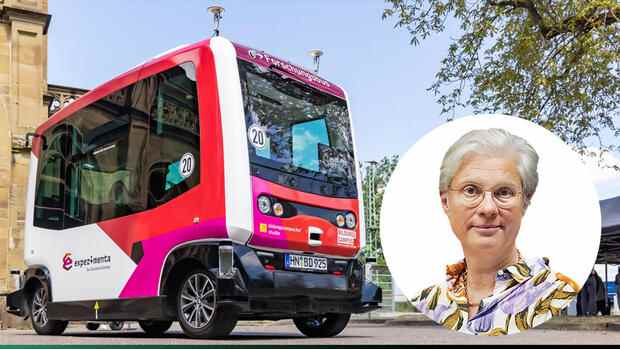The fight against climate change is the central task of our time. Therefore we have to ask ourselves: how can we achieve the same level of mobility or more with a significantly lower consumption of resources?
The answer: with shared mobility, local public transport. New, supplementary offers must be simple, fast, safe and sustainable. A passenger must be guided smoothly in local transport – without long waiting times, without having to replan routes themselves due to disruptions quickly through the city.
Automated driving can contribute to this. It has its strengths where “classic” local transport offers cannot show their advantages. For example in the outskirts of cities: There is great potential there to shift the traffic volume from cars to local transport.
With a new legal framework, the federal government recently created the conditions for this. Fleet operators are now allowed to use fully automated vehicles (SAE Level 4) in defined operating areas. They are not controlled from the vehicle, but monitored from a control center.
Top jobs of the day
Find the best jobs now and
be notified by email.
The initial euphoria is gone
At least 60 projects for the use of automated vehicles in public transport have been running and are still running nationwide. The Berliner Verkehrsbetriebe (BVG) have been involved in seven projects, mostly taking over the operation of automated vehicle fleets. In the projects, small steps have been taken to move from private property to the public road – always with accompanying personnel in the vehicle.
Initially, the experts assumed significantly faster technological leaps towards driverless mobility. However, demanding but typical traffic situations have pushed the automated shuttles to their limits.
Some roads are very narrow, there are obstacles in the way, rain or sun can impair visibility, or other road users carry out tight overtaking manoeuvres.
Unfortunately, the initial euphoria ebbed away over time. The impression remains that automated driving, as has been experienced in Germany so far, is not a “game changer”. The expected big leap, which will enable these vehicles to be scaled up economically, has not materialized so far.
>>Read here: Volkswagen and Ford abandon a billion-dollar project for autonomous driving – employees appalled
However, we are now in a new, more dynamic phase in which the market is changing rapidly. We are seeing more new players developing fully automated SAE Level 4 vehicles and planning to have them approved in Germany in the coming years.
Abroad is much more advanced when it comes to the use of driverless vehicles
But it is also true that the companies that develop the artificial intelligence of autonomous vehicles usually do not come from Europe. If we look at the USA or China, we quickly get the feeling that we in Europe are lagging behind in terms of technology and our level of ambition.
The Chinese company Baidu recently received approval to use driverless robotic taxis in two Chinese cities. In the US, the Cruise and Waymo fleets are also driverless.
However, the contribution of these robotic taxis to the mobility revolution is questionable if only a few people sit in them per vehicle and the journeys are not shared.
In Europe, the development of larger vehicles that are better suited to strengthening local transport is being pushed, and rightly so. After all, local transport plays a key role in the climate-friendly further development of mobility.
We need technology that is suitable for everyday use
The transport companies also have to do their homework. Monitoring an automated fleet from a control center requires new operational processes, new IT systems and new professional qualification measures. We must succeed in creating common standards so that isolated solutions do not arise.
In Germany we sometimes tend to overengineer products. Above all, however, we need technology in local transport that handles everyday traffic situations with ease – such as automatically avoiding illegal parking vehicles – and that meets the requirements of public transport, for example in terms of accessibility.
In order to be quick and easy, no approaches should be chosen that are based on an adapted road infrastructure. They would increase the complexity of the overall system instead of simplifying it. Instead, mobility concepts that can be integrated without adapting the existing urban infrastructure are more sensible.
To put it very simply: we want vehicles for easy, fast, safe and sustainable mobility.
The author: Eva Kreienkamp is Chairwoman of the Board of Directors of the Berliner Verkehrsbetriebe (BVG).
More: The robot taxis from China and the USA are competing in the future topic of autonomous driving
